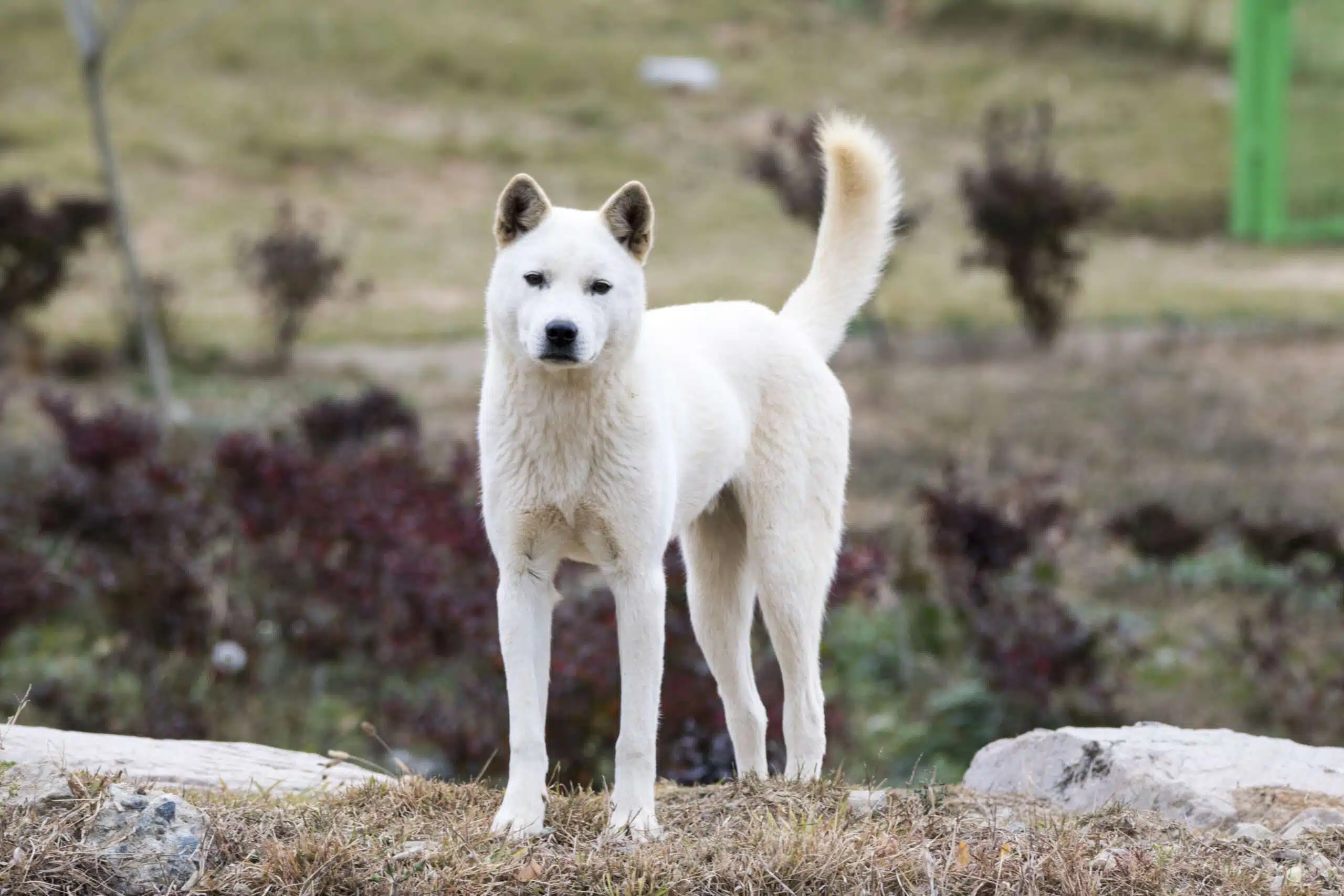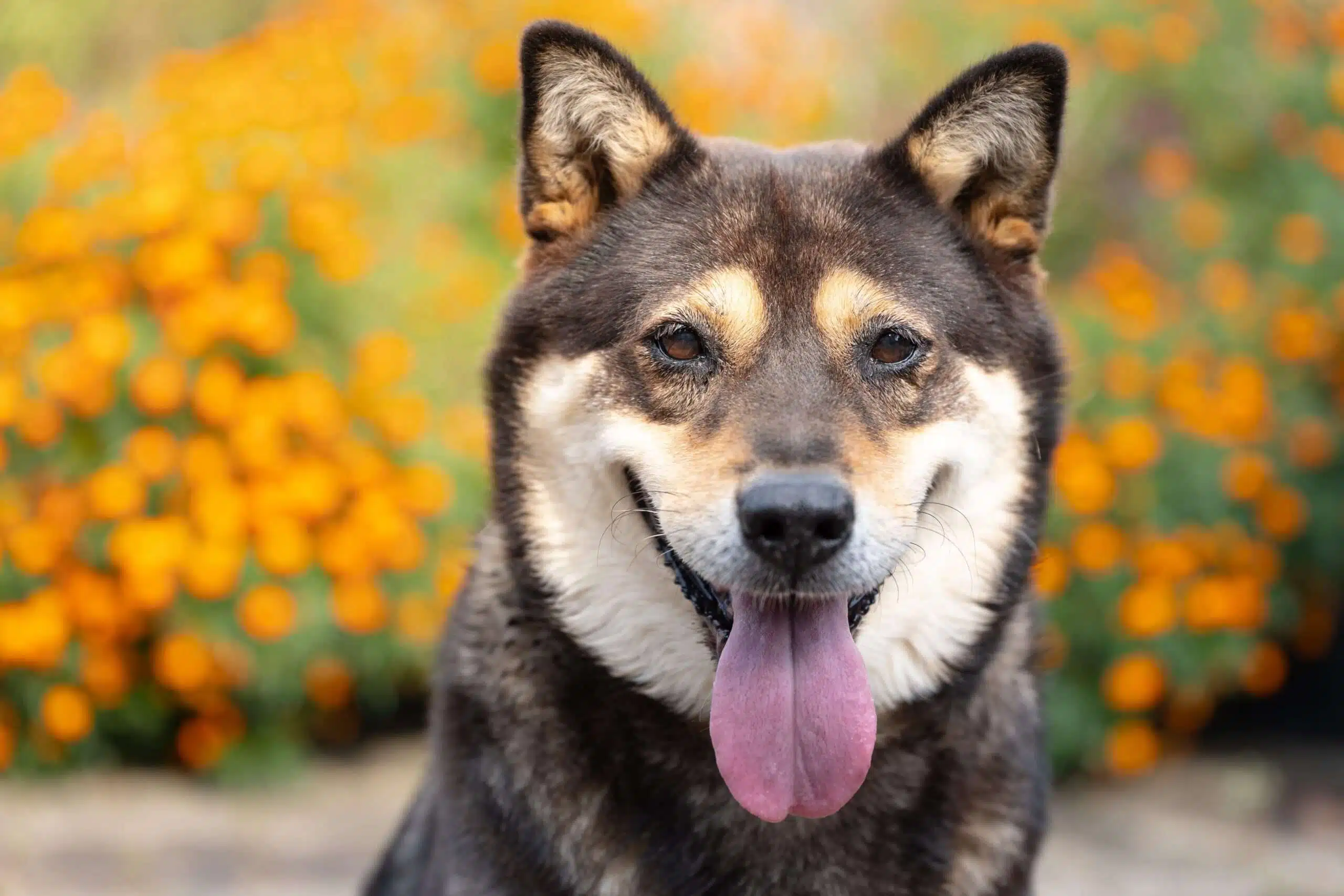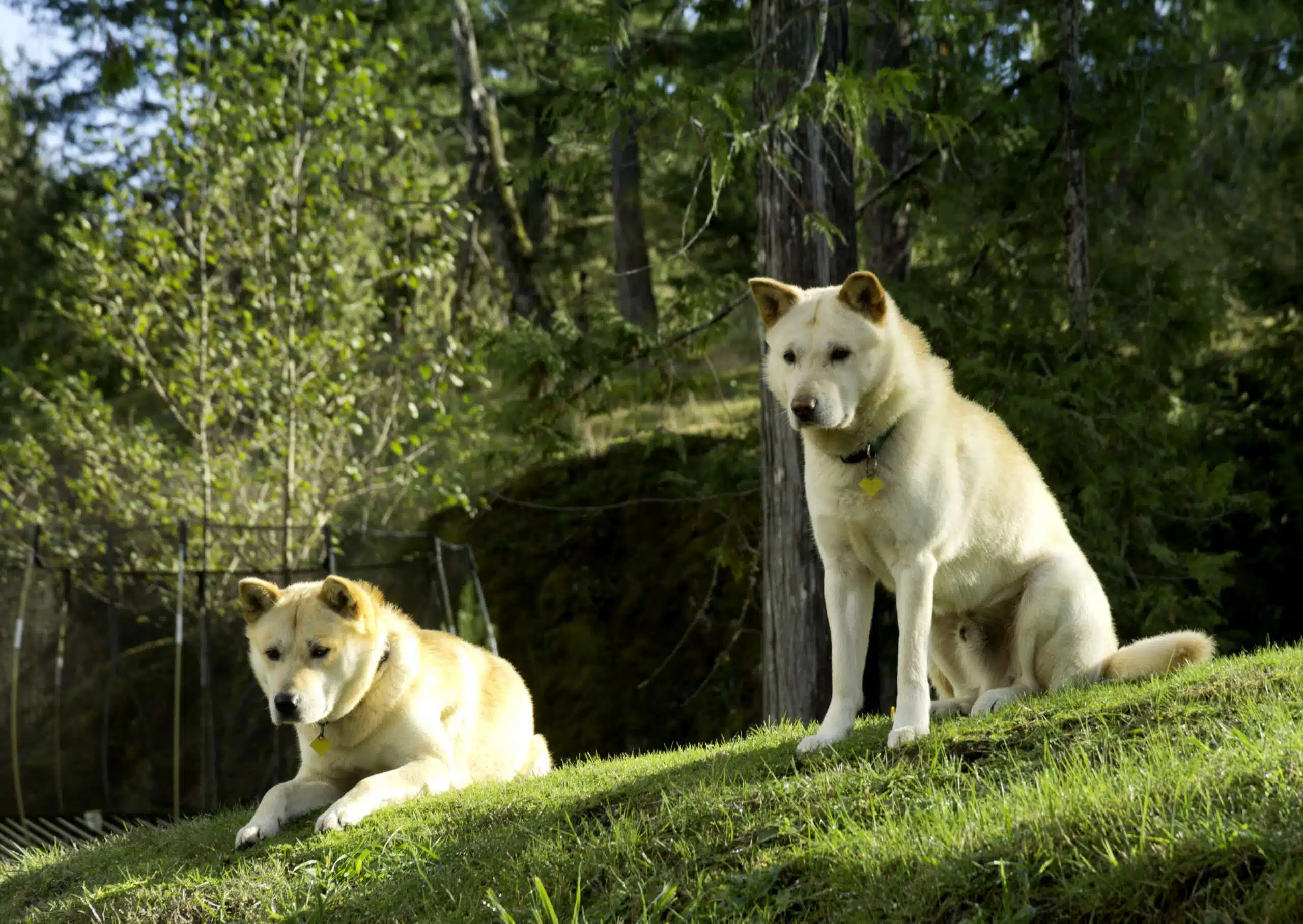Jindo

The Korean Jindo hails from the South Korean island of Jindo, yet its origins remain a mystery. Some speculate that it is an ancestor of dogs brought over during the Mongol invasion in 1270, while others presume they are descendants of Chinese canines who met misfortune at sea and were shipwrecked on the island between 960-1279. Whatever their arrival story may be, one thing stands true; this breed has been residing on Jindo Island for several centuries!
The Jindo was specifically bred for hunting. Korean hunters had no need of firearms or bows and arrows; instead, they used the pack mentality to their advantage with these loyal dogs tracking and capturing game animals such as deer and boar. Once a successful hunt occurred, some members would remain vigilant beside their prey while others guided the hunter back to the scene. Astonishingly enough, there are even stories of Jindos taking down tigers — one of nature’s apex predators!
The UKC recognizes the Jindo in six unique colors – white, fawn, red, brindle, grey and black & tan. With their self-cleaning coats and natural grooming habits similar to cats’, these beautiful dogs require minimal pampering for upkeep! However you should be aware that with a double coat they will shed profusely; especially during warm seasons. All in all though this breed is pretty low maintenance when it comes to grooming needs.
The Jindo is held in such high esteem that the South Korean government officially declared them a National Treasure, going so far as to forbid unsterilized non-Jindos onto their island home. As if that weren’t enough, even verified Jindos are prevented from leaving its shores! Yet due to these tight regulations, they remain extremely sought after and rare outside of Korea – with those mainland dogs being the only ones able to be exported.
Jindos are renowned for their loyalty and dedication to their owners, but that doesn’t mean they don’t have a protective side. In fact, when confronted with unfamiliar people in its home environment, the Jindo is likely to respond by barking. On top of this, these dogs tend not to adjust well if ownership changes hands; once the bond between owner and dog has been formed, it will be unbreakable!
Despite their modern-day companionship status, Jindo possess the same instincts that made them such formidable hunters. Owners must be vigilant when introducing them to other animals which may trigger these prey instincts – this includes cats! Their independent and free spirit nature means they can quickly escape any confinement so extra caution should always be taken.
Pet owners should keep in mind that the Jindo was initially bred as a hunting dog, so they need plenty of physical activity. This doesn’t mean city living isn’t suitable for them; however, regular outdoor exercise is necessary. When providing an open yard for them to play in it’s important that their fence be tall enough to prevent any potential escapes!
- Group AKC Foundation Stock
- Origin South Korea
- Size Medium
- Weight 35 to 50 pounds
- Coat Length Medium
- Coat Type Double
- Colors Black, Black & Tan, Gray, Red, White
- Other Names Korean Jindo Dog, Korean Jindo, Jin Dog
- Temperament Active, Bold, Brave, Faithful, Intelligent, Loyal




